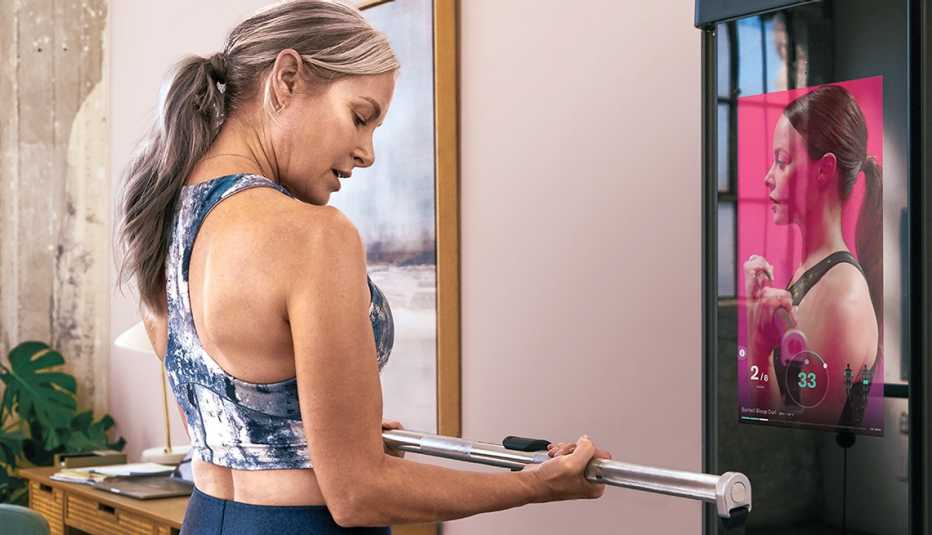Staying Fit


Bruce Phillips and his wife were regulars at their neighborhood fitness club in Oak Park, Illinois.
They took a range of classes, from cardio fitness to yoga and hip hop, which Phillips admits “is out of my comfort zone.” The couple was there so often they struck up friendships with fellow gym members.


AARP Membership— $12 for your first year when you sign up for Automatic Renewal
Get instant access to members-only products and hundreds of discounts, a free second membership, and a subscription to AARP the Magazine.
Then COVID-19 hit, the gym closed, and they stayed home to avoid the coronavirus. Even when the gym partially reopened, it no longer felt safe. Instead, the couple turned to weekend golf outings and Youtube fitness videos, but Phillips felt he needed something more for his at-home exercise routine.
After six weeks of research, Phillips, who has spent decades working in the technology field, ordered the Mirror, an interactive workout studio that streams live and on-demand fitness classes through a futuristic, mirror-like interface.
The home gym, which looks just like a mirror on the wall, is part of a new wave of smart home systems that blend into the decor and don't take up much space. Since COVID-19 shut down gyms across the country and people are reluctant to go back, Phillips and other workout enthusiasts have been turning to devices like the Mirror, Tempo and Tonal that use cameras, sensors and artificial intelligence to help users keep proper form.
Older adults embracing exercise technology
These high-tech home “gyms” are pricey, often starting at $1,500 and increasing from there. Most require subscriptions for trainers and classes, and that means additional monthly fees, though some of those subscriptions are available and useful even without the equipment. Despite the hefty price tag, sales have skyrocketed over the past year.
In the early days of the pandemic, technology-infused exercise bike Peloton saw a 66 percent increase in sales — just months after the company lost $1.5 billion of its value over an ill-conceived advertisement. Sales of Tonal, which uses magnets and electricity to simulate a weight-lifting experience with up to 200 pounds of resistance, are up around 800 percent year-over-year, with sales in November 2020 nearly double those for all of 2019.

































































More on Home and Family
Newest Smartwatches Move From Tracking Fitness to Monitoring Health
Added features can keep you heart-healthy — and may detect signs of COVID-19
Exercising at Home Just Got Easier
Fitness experts share 10-minute workouts you can do in your living room7 Substitutes for Professional Fitness Equipment
No weights or kettlebells at home? Jugs of water and cans of paint can work